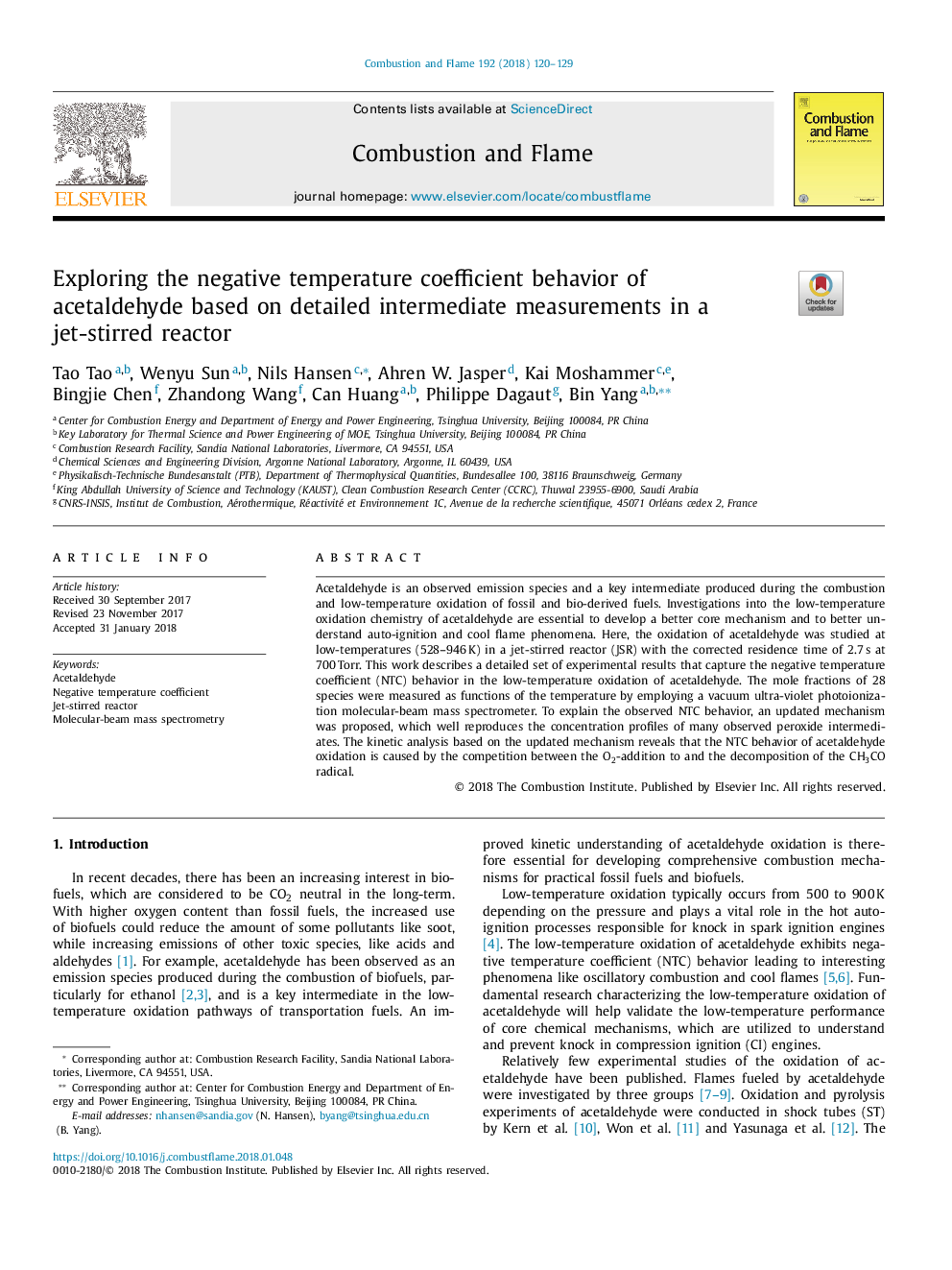| Article ID | Journal | Published Year | Pages | File Type |
|---|---|---|---|---|
| 6593652 | Combustion and Flame | 2018 | 10 Pages |
Abstract
Acetaldehyde is an observed emission species and a key intermediate produced during the combustion and low-temperature oxidation of fossil and bio-derived fuels. Investigations into the low-temperature oxidation chemistry of acetaldehyde are essential to develop a better core mechanism and to better understand auto-ignition and cool flame phenomena. Here, the oxidation of acetaldehyde was studied at low-temperatures (528-946â¯K) in a jet-stirred reactor (JSR) with the corrected residence time of 2.7â¯s at 700â¯Torr. This work describes a detailed set of experimental results that capture the negative temperature coefficient (NTC) behavior in the low-temperature oxidation of acetaldehyde. The mole fractions of 28 species were measured as functions of the temperature by employing a vacuum ultra-violet photoionization molecular-beam mass spectrometer. To explain the observed NTC behavior, an updated mechanism was proposed, which well reproduces the concentration profiles of many observed peroxide intermediates. The kinetic analysis based on the updated mechanism reveals that the NTC behavior of acetaldehyde oxidation is caused by the competition between the O2-addition to and the decomposition of the CH3CO radical.
Keywords
Related Topics
Physical Sciences and Engineering
Chemical Engineering
Chemical Engineering (General)
Authors
Tao Tao, Sun Wenyu, Nils Hansen, Ahren W. Jasper, Kai Moshammer, Chen Bingjie, Wang Zhandong, Huang Can, Philippe Dagaut, Yang Bin,
